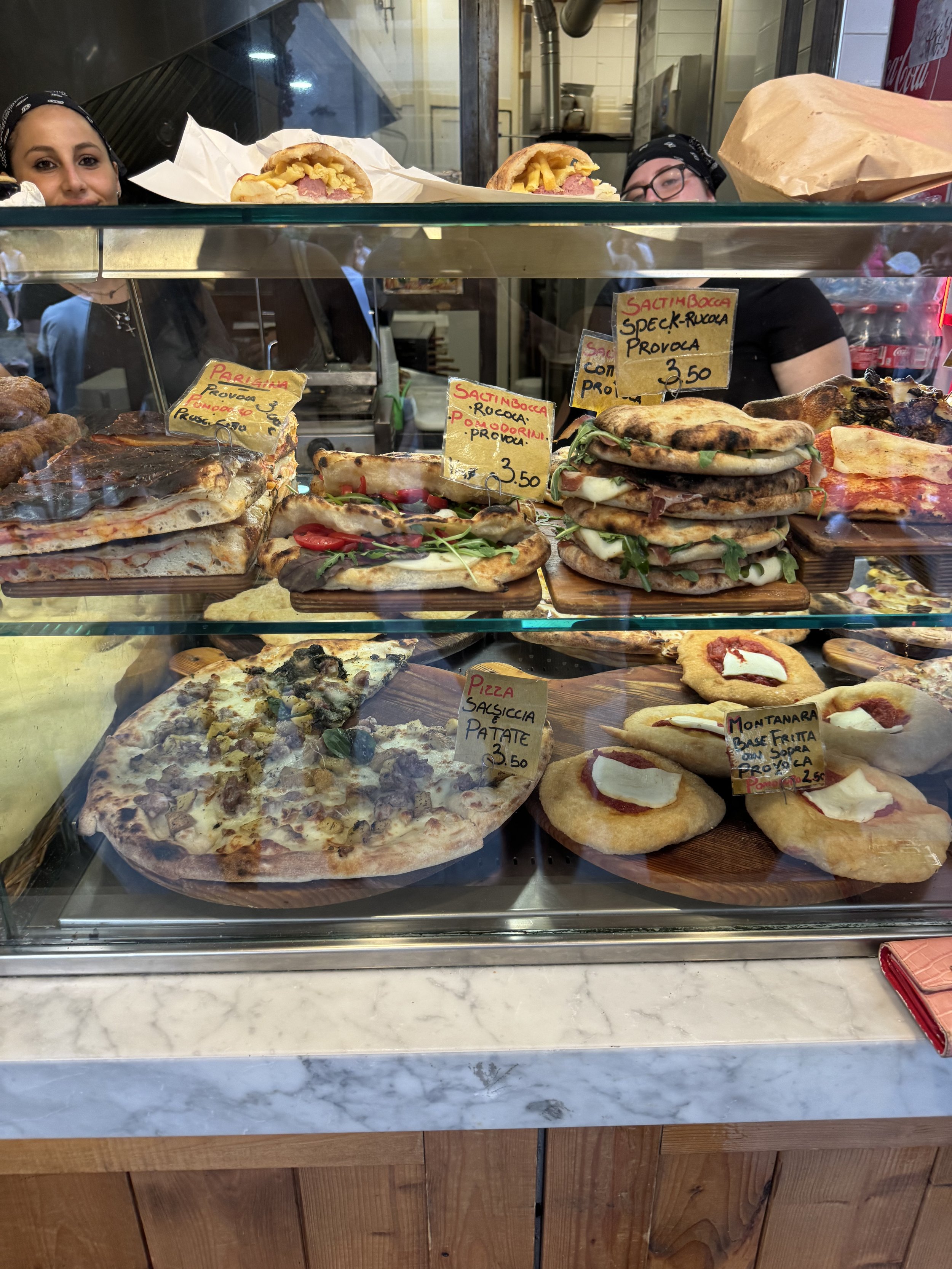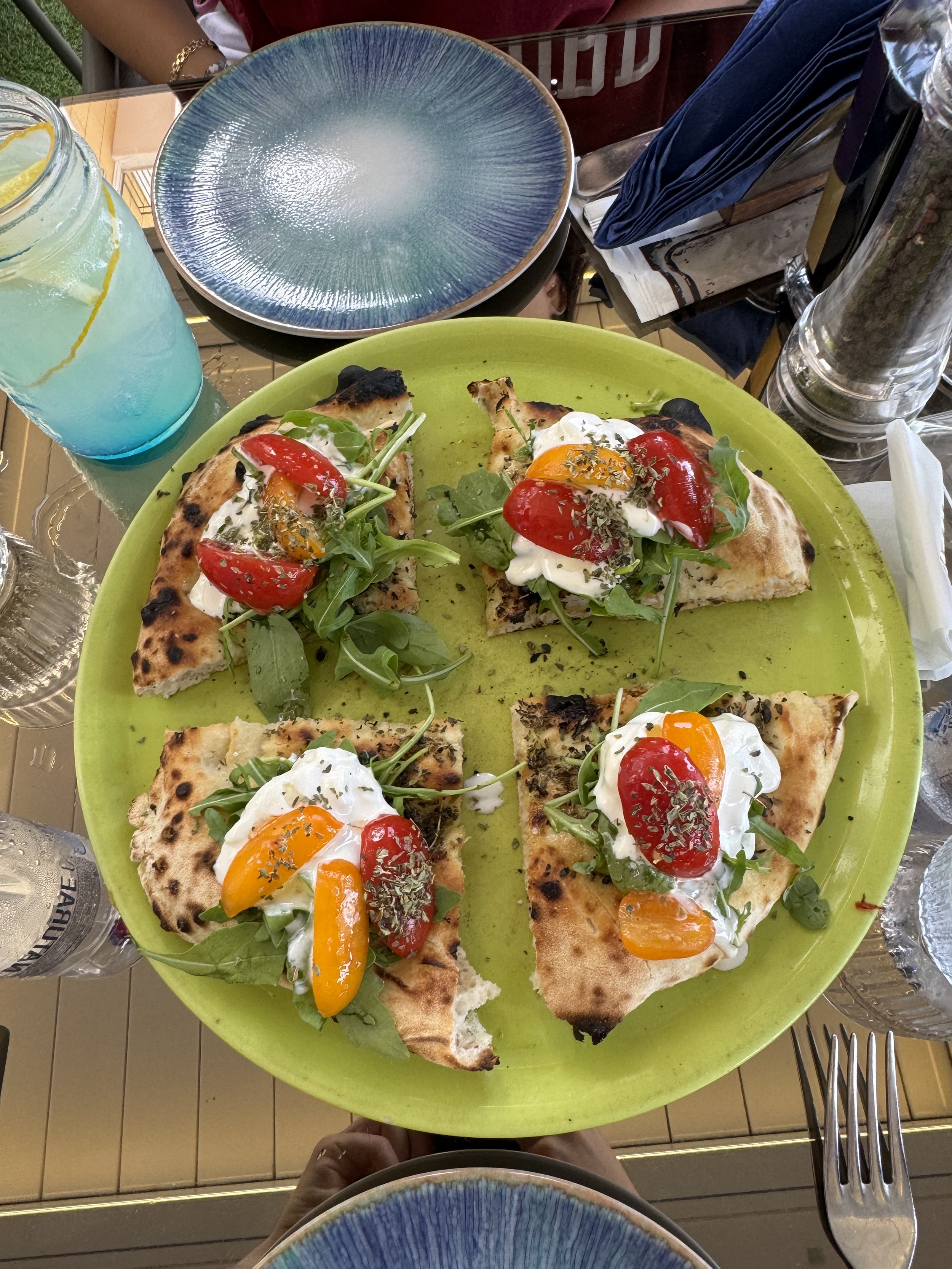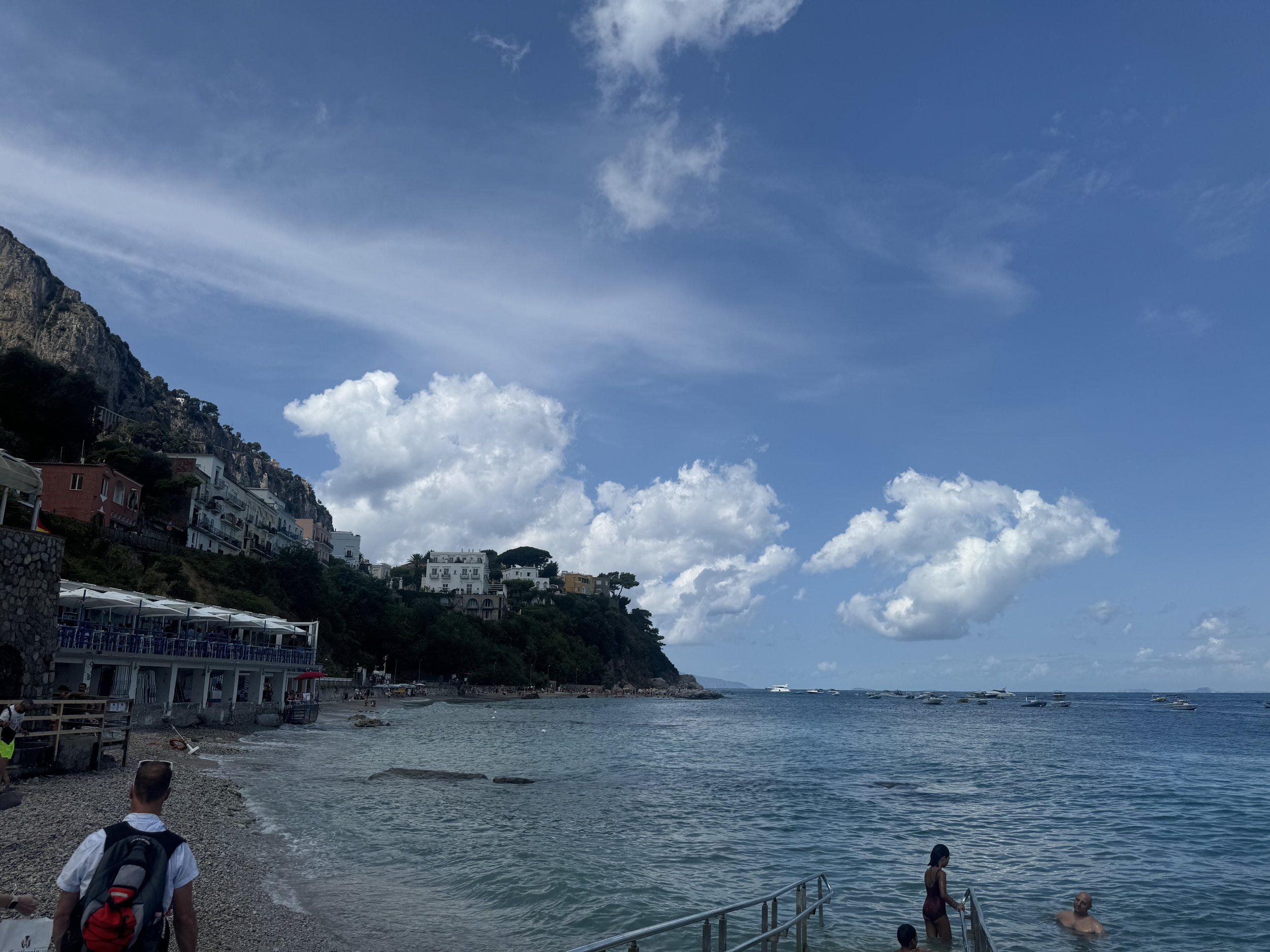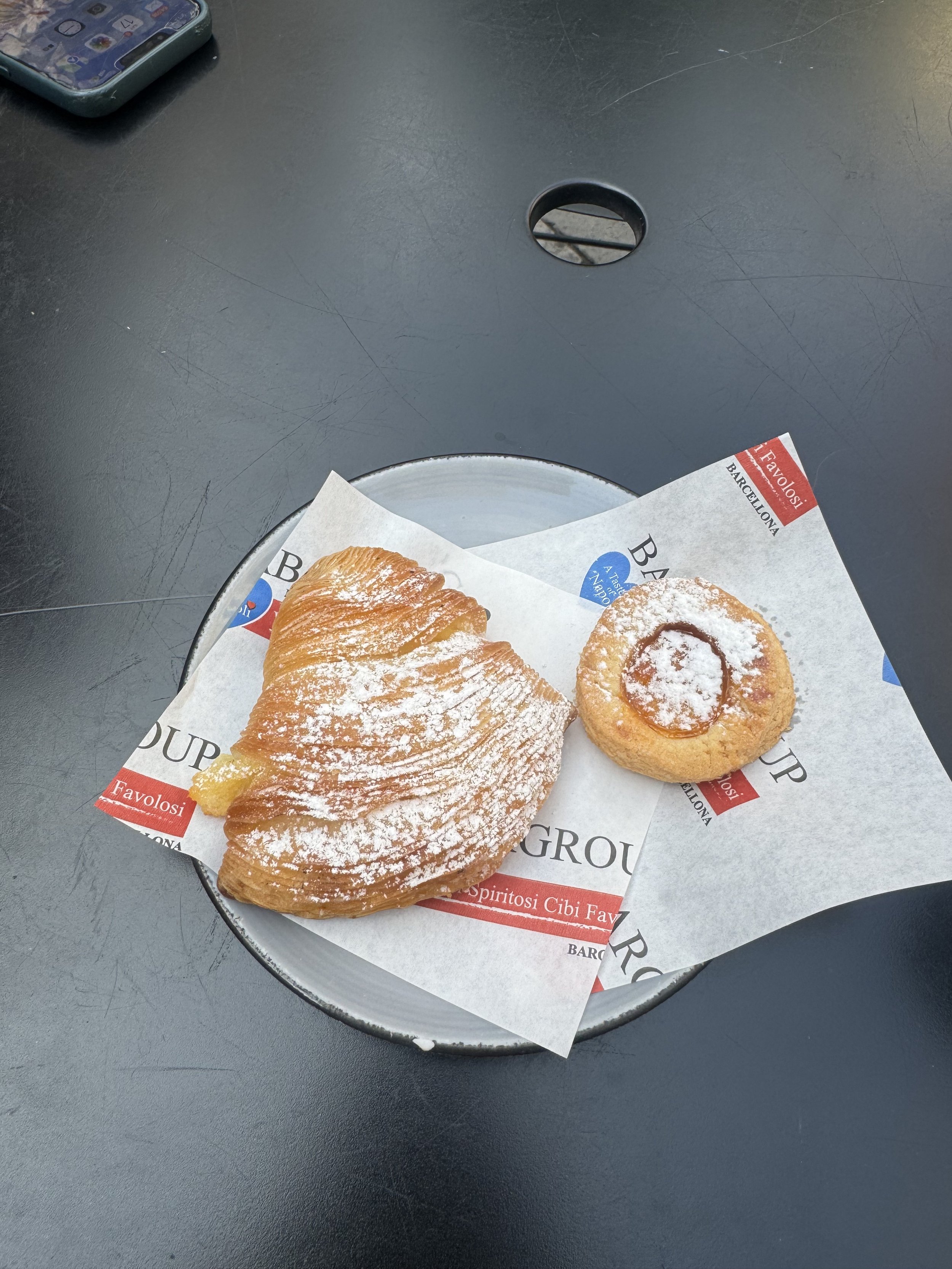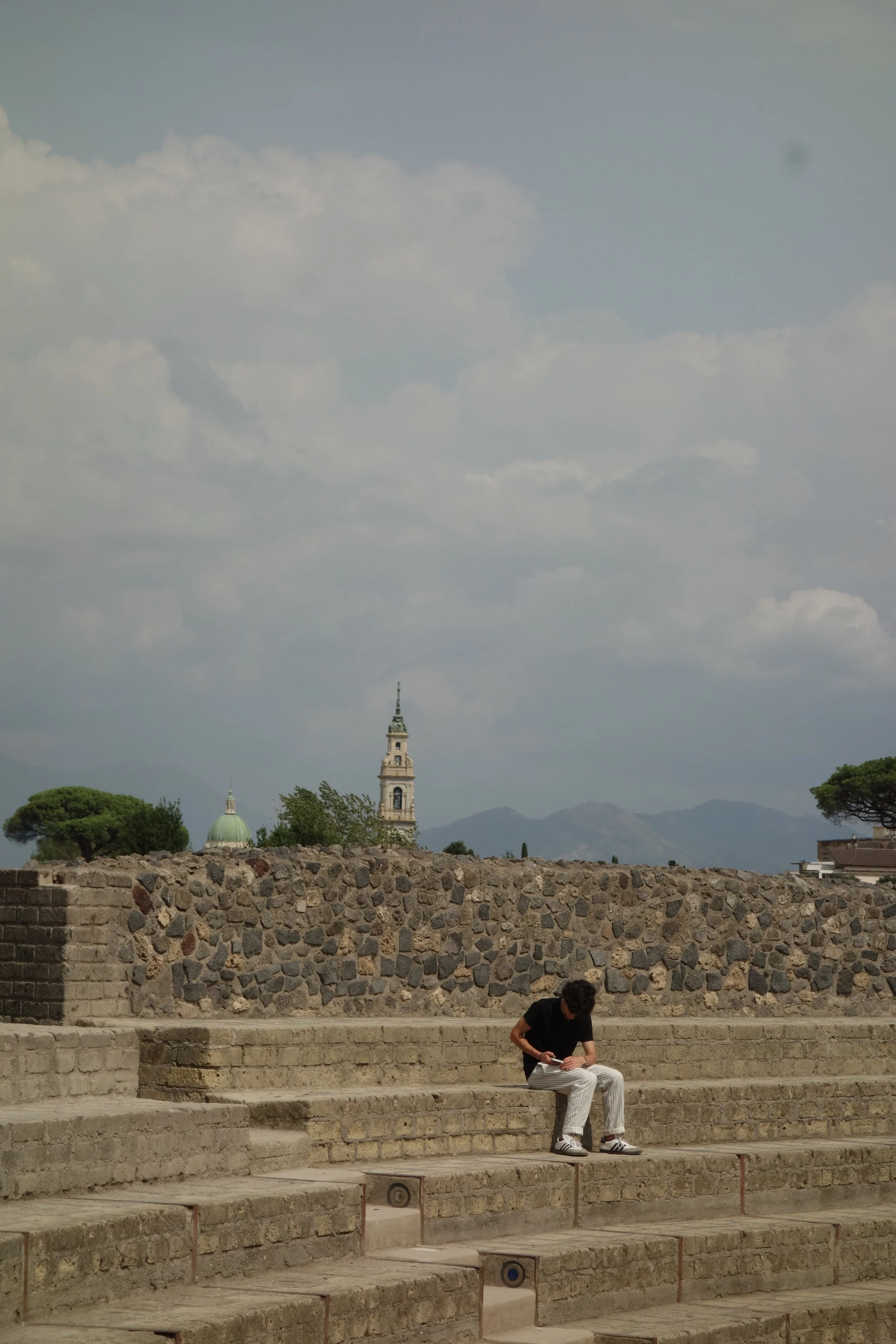italy [necessity is the mother of all pizza]
Pompeii
In 1984, then-F.C. Barcelona star Diego Maradona was directly involved in a violent fight at the Santiago Bernabéu in Madrid against Athletic Bilbao. The brawl was the culmination of a rocky tenure for Maradona, punctuated by public incidents that put him under an extreme microscope. One Barcelona executive stated: "When I saw those scenes of Maradona fighting and the chaos that followed I realized we couldn't go any further with him." So, Maradona transfered— right to Napoli, a Southern Italian team.
For Neopolitans, this transfer was everything. The reasons why Maradona’s transfer was so important to the citizens of Napoli illustrate a cultural reality of which I was completely unaware when I initially came to Italy. Napoli’s reputation in Italy now isn't so bad— it's become a tourist hot spot, and, of course, was the birthplace of pizza. But, especially back then, Naples was viewed as an unseemly, lowly place by many Italians. It was a city of misfits. One guide told us that shops in other parts of Italy used to bear signs saying “no dogs or Neopolitans.” And, given the Northern Italy-centric state of soccer at the time, the arrival of Maradona (a working-class icon from Buenos Aires, an Argentinian city with it's own unseemly reputation) was viewed, and still is viewed, as the arrival of a savior. Images of Maradona are everywhere in Naples. When he arrived, a local newspaper said that despite the absense of a "mayor, houses, schools, buses, employment and sanitation, none of this matters because we have Maradona.” Today, a common poster to see in Naples says “god is real”— not accompanied by a Catholic symbol (although I should point out the city’s deeply Catholic roots), but by Maradona.
Hold that thought. The best book I read this summer was Guns, Germs, and Steel by David Silver. The book discusses the geographic and environmental factors which cause societies to evolve in distinct ways. In his work, Silver disputes the notion that necessity is the mother of all invention; in reality, he demonstrates, great inventions come from a society having the time and resources to play around and create without burden. The sociological facts of Naples certainly don’t disprove this claim, but the city does throw in a wrinkle. Time and time again, Nic and I encountered stories of key cultural facets of Napoli’s distinct, endearing, “life-is-about-other-people-and-the little-things-you-snack-on-together” vibe (think Margherita Pizza, pasta, candlelit streetside portraits of the Virgin Mary)- all informed by a strange intersection between, as our guide told us, “necessity and choice.”
Take Maradona, for example— Naples’ attachment to the star is more than a purely utilitarian attachment, but it's also motivated by a very real need to validate its own cultural position in Italy, something that doesn't motivate many relationships between cities and their sports stars. I don't know if it's unique to this city, but in Naples, it is at least made more obvious— cultural beauty does not purely stem from free time and making fun new things for the hell of it (a trait which I think is displayed by the evolution of culture in very wealthy parts of the U.S.). However, nor does Neopolitan culture come purely from a dire need to escape difficult circumstances. Naples has a culture murkily informed both by A) desperate trial and error, and B) slow-moving, easygoing expressions of passion for the art forms for which Italy has come to be known.
This intersection is no where made more obvious than in the city’s culinary landscape. The history of every dish, like Napoli's signature Genovese sauce (which has evolved thanks to a combination of ingredient availability and necessity for attracting tourists) or its iconic Margherita pizza (invented in order to both advance the Pizza art form and impress the then-queen of Italy), involves a remarkable combination of necessity and choice. The fact that Neopolitans have had very little economic, societal, or nutritional wiggle room has by no means stifled artistic and cultural evolution. It has simply flavored that evolution.
So let’s talk about what we ate.
Pizza.
This is what you come to Naples for. It’s not hard to find authentic Neopolitan pizza, characterized by its street-style 2x fold and by the simplicity of ingredients: a basic dough, raw tomatoes, fresh mozzarella cheese, fresh basil, and olive oil. Just wander around Naples’ historic district for a few minutes (hell, a few seconds). Now, do I think it’s better than New-Haven-style pizza? No. It’s about the same, honestly; they bring different things to the table. Take the pizza we are at Di Matteo, for example.
Di Matteo
Di Matteo comes to the top of any list of “best street Pizza in Napoli,” and it’s easy to see why. These small circles of joy emerge from the display counter piping hot, smelling excellent, and topped with the freshest tomato sauce, mozzarella, and basil you’ve ever tasted. If you’re expecting good American-style pizza, with beautiful toppings and firm undercarriage, you’ve come to the wrong place— you’re looking for a pet dog in a cat shelter. The pizza from Di Matteo brings a simple, almost primal joy; it’s sweet, doughy, and delicious.
I’m going to lump in a couple of pizza-adjacent dishes here, because I really think they illustrate the “necessity & choice” aspect of Neopolitan cuisine. These dishes are made of almost all the same ingredients— dough, cheese, sauce, maybe some meat; but they are composed of unique geometries and intensities which delight the senses.
Beach Restaurant in Capri— Foccaccia
Whoo boy, this was good foccacia. The bread was fluffy and tasty, with a decent salting over the crust to give it some twang. The simple beauty of a balsamic drizzle will always amaze me. The buratta was good, but it’s honestly not my favorite type of cheese, so I feel like I’m a bad judge in this context.
Note on the setting:
We enjoyed this dish while directly next to a beach on the island of Capri, looking out to the Tyrrhenian Sea. There’s truly nothing like it. Every ocean is old, but not every ocean is this beautiful, and there’s something incredibly reassuring about soaking in the warmth and charming splendor of the Italian coast knowing that you’re doing so in temporal unity with two thousands of years of other human beings, they themselves embracing an inarticulable attraction to the sparkling blue waves.
Street Cafe in Napoli— Pastry with Sauce and Cheese (name, anyone?)
This is my ultimate pastry; two thick layers of dough surrounding, well, the exact same ingredients as pizza, plus a little bit of ham. The ingredients weren’t remarkable, but the structure of the pastry itself brought me great joy. It’s like a closed panini; a flat, simple burrito; a taco that went beautifully wrong.
Pasta.
The historic district of Napoli, where we spent most of our time, is centered around a street called Via Toledo. The street is absolutely covered in souvenier stores, clothing shops, and little food stalls. For the restaurants, one has to only turn down any of Via Toledo’s arterial branch streets; each one serves as home to a different dinner spot, the vast majority specializing in classic Neopolitan dinners of pasta, meat products, and possibly pizza. We loved every one of these restaurants that we visited. The “baseline vibe” (if you will) at each spot was the same: warmly lit, loud, close-quarters, romantic, carb-loaded. Italian, and authentically so. In terms of pasta, the most attractive aspect of grubbing on good Italian carbstrings in good Italian restaurants is simplicity: the ingredients are fresh and restrained, and the portion sizes are small enough to actually enjoy the dish while large enough to not leave you hungry. Here are three of the many pasta dishes we ate:
Pasta a la Genovese
Naples’ signature pasta sauce is Genovese sauce, a slow-cooked onion and meat sauce that one is likely to find on an Instagram reel about Naples with the caption “Naples’ secret sauce will blow your mind.” Now, is it better than other Italian sauces? No, it’s not; as a tour guide we met lamented on the first day, its a bit of a watered-down mess if you get it from a touristy spot. But done right, it’s damn good.
Gnocchi
My favorite type of pasta. I love a good, chewy-inside crunchy-outside gnocchi, and this didn’t dissapoint. The sauce was a bit of a let-down, but the pasta quality made up for it.
Pasta Carbonara
A pasta dish made with fatty cured pork, hard cheese, eggs, salt, and black pepper. My American palette always says to itself “yum! Bacon cheese pasta!” Obviously, Carbonara is more than that— but its not a dishonest analysis.
Homemade
When we came to Italy, a homemade pasta class was non-negotiable.
Note on the setting:
When we arrived at the assigned restaurant for this class, we had somewhat diminished expectations; we were in a slightly humid restaurant basement at plastic tables, not anywhere near a fancy kitchen like one might imagine for an Italian pasta making “experience.” But, of course, this was for the best— you don’t need a fancy kitchen and “curated vibe” to make good pasta, you just need a good teacher and a good group of people to work with.
The pasta-making process feels almost like mathematical art; you have to perfect the ratios, reason out where best to place the tortellini filling, papardelle cuts, etc., and time the drying process just right. You’re using geometry, but at the same time, you’re trying to achieve a flow state with certain cooking techniques that have been around for longer than you can comprehend. Good stuff.
Baked Goods.
Like I mentioned, the streets of Naples are lined corner to corner with absolutely fantastic options for pizza, gelato, sandwiches, and, most of all, baked goods. Great googly moogly, that city has a lot of baked goods. Every little bakery has a very urgent energy, as if they’re in the middle of a military operation to feed as many Neopolitans as possible. Here are three of the many common (Italian) options:
Sfogliatelle
Like a flakier, crunchier, sweet-goodness-filled croissant. The first thing we ate in Naples, actually— our favorite had a sweetened riccota filling. A little messy to eat if you’re not skilled. I’m not skilled. A dense but tasty dessert.
Graffa
Like a donut. Actually, a lot like a donut. Officially described as “sweet and soft fried donuts made with flour, boiled potatoes, eggs and butter;” tastes a lot like something you’d get at a state fair, especially considering the fact that they’re doused in sugar. We went to Plaza de Maradona and got a blue graffa, which was fun.
Bomba
Kind of like a filled muffin; fluffy, but stuffed with a frosting-adjacent filling. I never actually got to try one, unfortunately.
Rapid-fire: where we went.
Aside from culinary adventures, we went to a bunch of tourist spots. All of them blew my mind.
Historic Naples
Energetic. Loud. Happy. Hot. (This is a picture of a church, so less loud, but still happy).
Pompeii
Holy shit, this place is so old. Makes you feel incredibly small but also incredibly human. We saw a mysterious cat wandering around a 2000-year-old city; there’s something really nice about that.
Capri/Amalfi
The Italian coast is incredibly serene and beautiful. Wow.
Castle Overlooking Naples
As you stare at Mount Vesuvius across the bay, you’re really reminded of just how at the mercy of nature we all are (if Pompeii didn’t remind you of that already).
You really gotta wonder what the relationship between individual life and larger society actually is. I’m a sociology and government major at Georgetown, and one of the most formative sociological texts is titled “The Promise.” In the essay, sociologist C. Wright Mills discusses the importance of the “sociological imagination,” which can basically be summed up as having an incredibly high-quality wide-angle lens with which to examine the influence of society, culture, and history on one’s private life. “The first fruit of this imagination,” he writes, “is the idea that the individual can understand her own experience and gauge her own fate only by locating herself within her period, that she can know her own chances in life only by becoming aware of those of all individuals in her circumstances… The sociological imagination enables us to grasp history and biography and the relations between the two within society.” That’s cool, I think, and obviously holds a deep importance for the field of sociology. But it’s pretty hard to actually apply the “sociological imagination” to one’s personal context when we’re all so emotionally invested in our own lives. And it’s harder still to analyze the intersection between individuals (i.e. our tour guide, Diego Maradona, or a taxi driver who we found particularly funny) and culture (i.e. the cultural significance of ancient Roman society for contemporary Italians, the evolution of pizza, or the excitement around the Neopolitan soccer team) when we’re experiencing the city as overwhelmed tourists. Maybe I (and the tour guide) have it all wrong; maybe Neopolitan life has nothing to do with the intersection between necessity and choice. Maybe Thomas Carlyle is right, and the history of any given city is entirely influenced by individual “great heroes” and the things they get up to (although I really doubt it). Maybe I'm way off. But, if I had to take a crack at it, I’d sum up Naples (and the surrounding Italian coastal area) like this: it has endured a long history, bizarre political restraints, weird geographic circumstances, and a whole lot of social upheaval. But in spite of (and often because of) this socio-chemical cocktail, Naples has come up with some really beautiful, cool shit to offer. Like pizza.
It all comes back to cheese, bread, and sauce.



